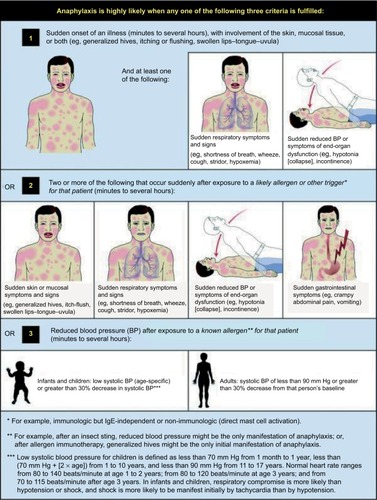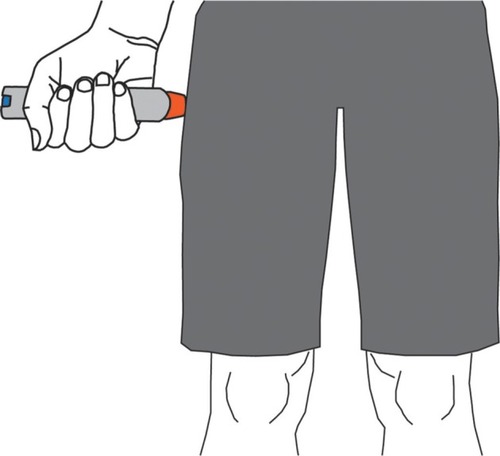Figures & data
Figure 1 Criteria that increase the likelihood of anaphylaxis.

Figure 4 Comparison of the (A) old-look and (B) new-look (right) EpiPen® Auto-Injector (Mylan Specialty L.P., Canonsburg, PA, USA).

Figure 5 Proposed child restraint options for the administration of an epinephrine auto-injector.



